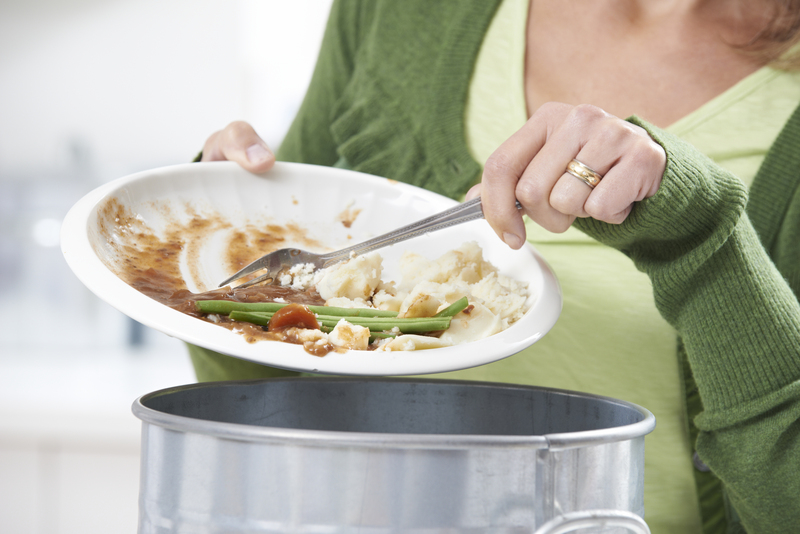Understanding the Importance of Clutter Removal in Hoarder Situations
Hoarding is a complex psychological condition that affects millions of people worldwide. It often goes unnoticed until it severely impacts an individual's quality of life, compromises safety, and affects family dynamics. One of the most critical elements in addressing this issue is clutter removal in hoarder situations. This process not only helps in regaining lost living space but also plays a significant role in restoring mental well-being and ensuring a healthy living environment.

What is Hoarding Disorder?
Hoarding disorder is a persistent difficulty discarding or parting with possessions due to a perceived need to save them. People with this disorder experience distress at the thought of getting rid of items, leading to excessive accumulation that eventually crowds and disrupts their living spaces. This clutter can range from newspapers and clothing to broken appliances, garbage, and sometimes even animals.
Causes and Triggers of Hoarding
The origins of hoarding are varied and often rooted in psychological, emotional, or environmental factors. Common causes include:
- Trauma or significant life events such as divorce, death of a loved one, or financial hardships
- Genetic factors and family history
- Underlying mental health conditions, including anxiety, depression, and obsessive-compulsive disorder (OCD)
- Difficulty making decisions
Recognizing the Signs of Hoarding
Early identification is crucial in addressing and managing hoarding. Common signs include:
- Excessive accumulation of items with no real value
- Difficulty discarding possessions regardless of their uselessness
- Cluttered living spaces, making rooms unusable for their intended purpose
- Social isolation due to embarrassment or shame about their living environment
- Strained relationships with family and friends
Why Clutter Removal is Essential in Hoarding Situations
Clutter removal in hoarder houses is much more than a simple cleaning task. It is a critical intervention that affects the individual's health, safety, emotional state, and relationships. Addressing hoarding situations requires compassion, planning, and a thorough understanding of the risks involved.
Health and Safety Hazards
Living in a cluttered and hoarded environment can lead to numerous health and safety risks, including:
- Fire hazards: Accumulated papers, fabrics, and other flammable materials can rapidly spread fire, making escape routes inaccessible.
- Mold and bacteria: Decomposing food, organic matter, and trapped moisture can promote the growth of harmful microorganisms, jeopardizing respiratory health.
- Pest infestations: Rodents, cockroaches, and other pests thrive in cluttered living spaces, spreading diseases and causing further property damage.
- Tripping and falling: Narrow walkways and hidden objects increase the risk of falls, particularly for elderly or mobility-impaired individuals.
- Structural damage: Overloaded floors and blocked ventilation can lead to costly property damage over time.
Mental and Emotional Well-being
The emotional toll of living amidst overwhelming clutter is significant. Many individuals experience:
- Chronic stress, anxiety, and depression
- Feelings of shame, embarrassment, and isolation
- Difficulty concentrating or making decisions
- Strained family relationships and resulting loneliness
Clutter cleanout for hoarders can help alleviate these psychological burdens, providing a sense of relief, control, and hope for recovery.
Social Impact of Hoarding
Hoarding does not only affect the individual but also deeply impacts family, friends, and the broader community. Loved ones may feel helpless, frustrated, or resentful. Children growing up in such environments are at risk of neglect and social stigma. Large-scale hoarding can also reduce neighborhood property values and lead to legal or municipal interventions if it poses dangers to others.
Approaches to Clutter Removal in Hoarder Environments
Tackling clutter removal in hoarder homes requires a structured and sensitive approach. It's crucial to address both the physical mess and the underlying psychological challenges to avoid relapses and support long-term well-being.
Preparation: Building the Right Support Team
A successful intervention often involves a multidisciplinary team, including:
- Mental health professionals
- Professional organizers or specialized hoarding cleanup services
- Medical professionals (if physical health is compromised)
- Supportive family and friends
Compassion and patience are essential throughout the process, as abrupt or forced cleanouts can worsen anxiety and lead to resistance.
Step-by-Step Clutter Removal Process
-
Assessment and Planning:
- Survey the property to identify hazards and prioritize areas
- Assess the individual's readiness and concerns
- Develop a realistic timeline and goals
-
Sorting and Decision-Making:
- Work with the hoarder to separate items that can be discarded, donated, or kept
- Use motivational interviewing techniques to support decision-making
- Label boxes clearly to minimize stress and confusion
-
Removal and Disposal:
- Arrange for regular trash pickups or dumpster rental
- Contact local charities for item donations
- Dispose of hazardous materials safely, following local regulations
-
Deep Cleaning and Restoration:
- Disinfect surfaces and treat areas affected by mold or pests
- Repair structural damage and restore utilities if necessary
- Install organizational systems to maintain a clutter-free environment
-
Follow-up Support:
- Set up regular check-ins with mental health professionals
- Provide ongoing organizational assistance
- Encourage participation in support groups
The Benefits of Professional Hoarder Cleanup Services
Professional clutter removal companies offer essential services to safely and effectively address even the most severe hoarding cases. Their expertise includes:
- Specialized training in hazardous material handling
- Understanding of psychological needs and compassionate communication
- Efficient sorting, organizing, and disposal methods
- Ability to restore properties to safe and habitable conditions
Hiring professionals can dramatically reduce the physical and emotional stress often associated with hoarder clutter cleanouts. These experts operate with discretion, respect, and sensitivity to help ease the transition toward a healthier lifestyle.
Cost Considerations and Planning
The cost of professional hoarder cleanup varies depending on the severity of clutter, property size, and local rates. However, financial assistance may be available from local organizations, government programs, or through insurance if the clutter poses a health hazard.
Long-Term Success: Preventing Relapse in Hoarding Situations
True progress in clutter removal for hoarders extends far beyond a one-time cleanup. Sustaining a safe, organized home requires ongoing support, therapy, and often lifestyle changes. Effective relapse prevention strategies include:
- Regular mental health therapy or counseling
- Participation in hoarding support groups (in-person or online)
- Developing new hobbies and relationships that do not center around possessions
- Creating and sticking to organizational routines
- Involving accountability partners, such as trusted family or friends
By addressing both the emotional and practical dimensions of hoarding, individuals can gradually rebuild self-esteem, improve social ties, and regain mastery over their living space.
How to Approach a Hoarder: Compassion and Communication
One of the biggest challenges in clutter removal for hoarder households is initiating the process. Confrontation, criticism, or ultimatums rarely work and can damage relationships. Instead, approach loved ones with empathy and understanding:
- Listen to their fears and motivations without judgment
- Encourage small, manageable steps rather than expecting immediate changes
- Focus on health, safety, and well-being rather than aesthetics
- Offer practical help and professional resources
- Celebrate progress, however limited, to build momentum
Remember, clutter removal in hoarder homes is not an overnight transformation--it's a journey that requires patience and persistence.
Legal and Ethical Considerations
In some extreme cases, hoarding can violate local health, building, or fire codes, especially if it threatens neighbors or children. Intervention by social services or municipal authorities may become necessary, but it's always preferable to seek voluntary cooperation first. Always respect the dignity and autonomy of the individual while ensuring safety.

The Role of Community in Supporting Hoarders
Successful clutter removal in hoarder situations often involves the broader community:
- Neighbors can offer nonjudgmental support and understanding
- Community organizations may provide financial aid or professional help
- Municipal officials can offer resources for safe cleanup and property restoration
Reducing stigma and raising awareness about hoarding can motivate more people to seek help earlier and prevent hazardous conditions from developing.
Conclusion: Transforming Lives through Clutter Removal
Clutter removal is a cornerstone of recovery in hoarder situations. It goes beyond simple tidiness; it is about reclaiming a safe, healthy, and dignified life. Whether you are a family member, friend, or professional, understanding the complex needs and emotions behind hoarding can foster a compassionate, effective approach. With the right strategies, support systems, and resources, anyone can turn chaos into comfort, transforming not just homes but also lives.
If you or someone you know struggles with hoarding, remember: help is available. Begin the journey toward recovery today by reaching out to mental health professionals, professional organizers, or support groups. Every step counts on the path to a clutter-free, fulfilling future.

